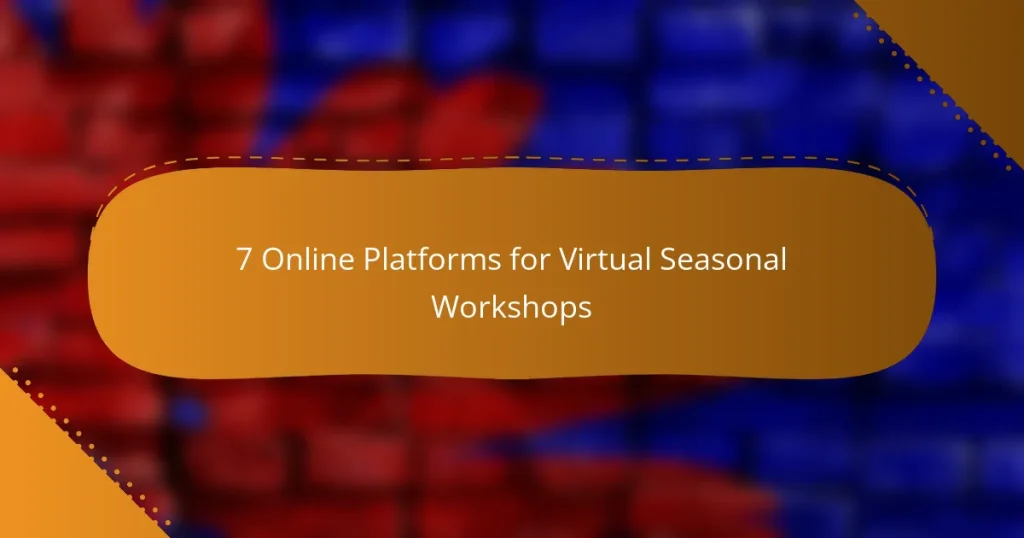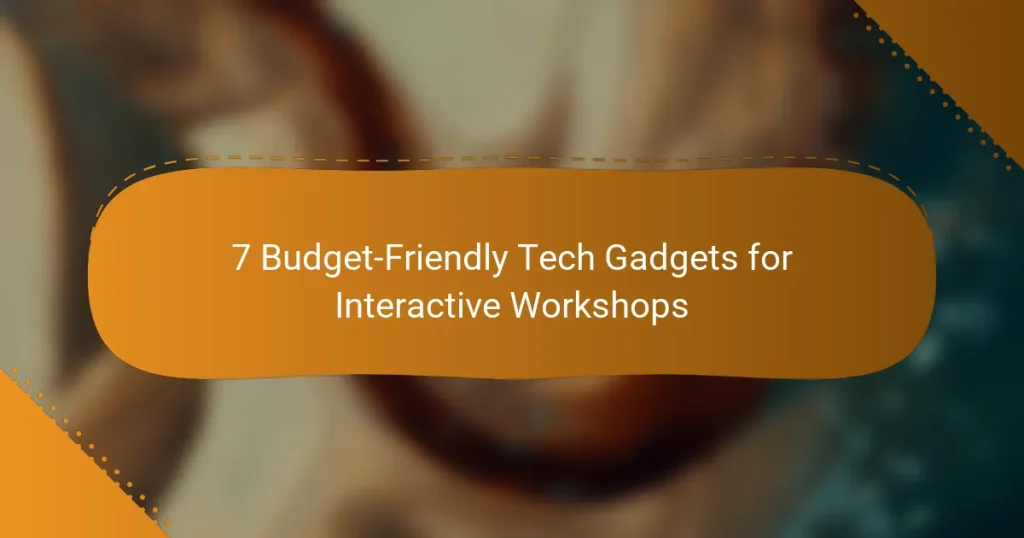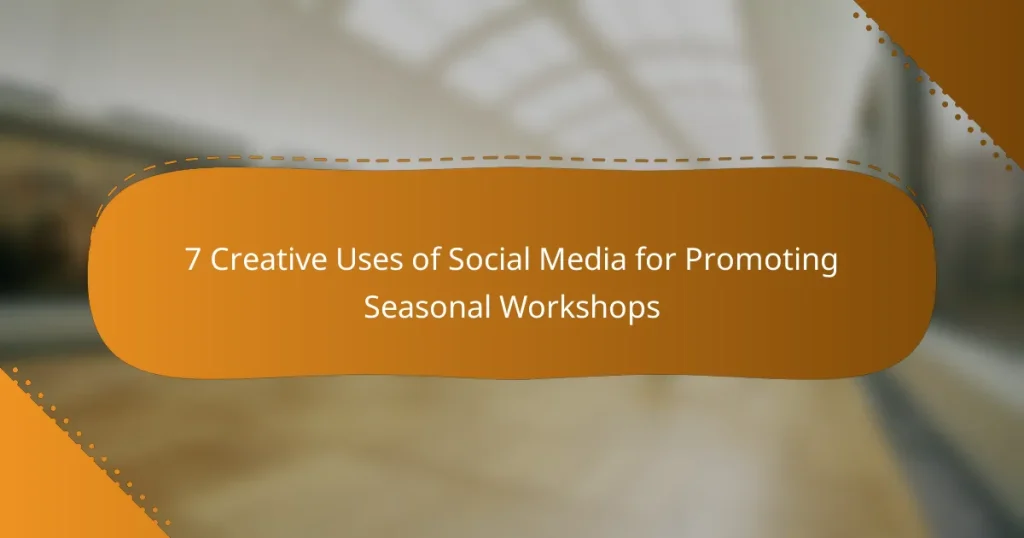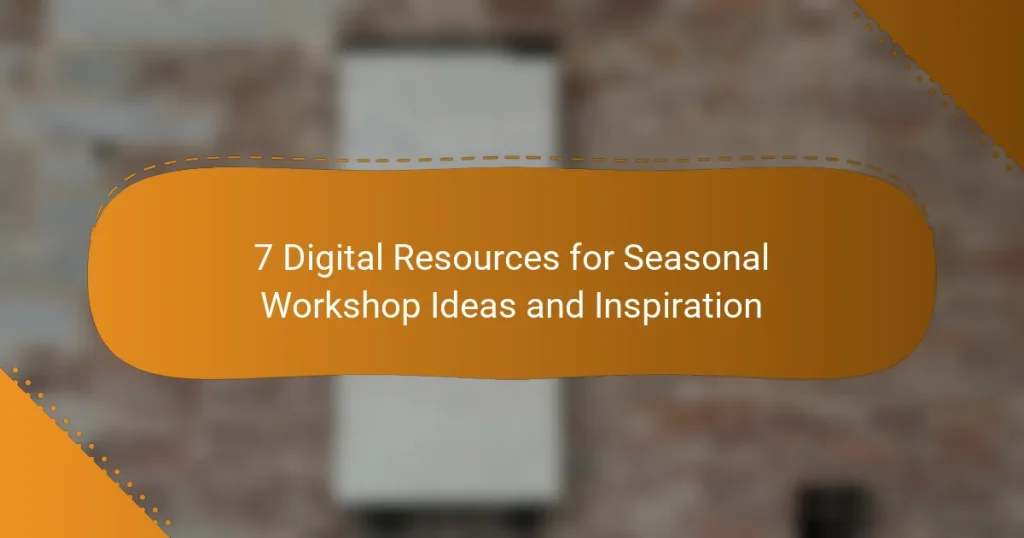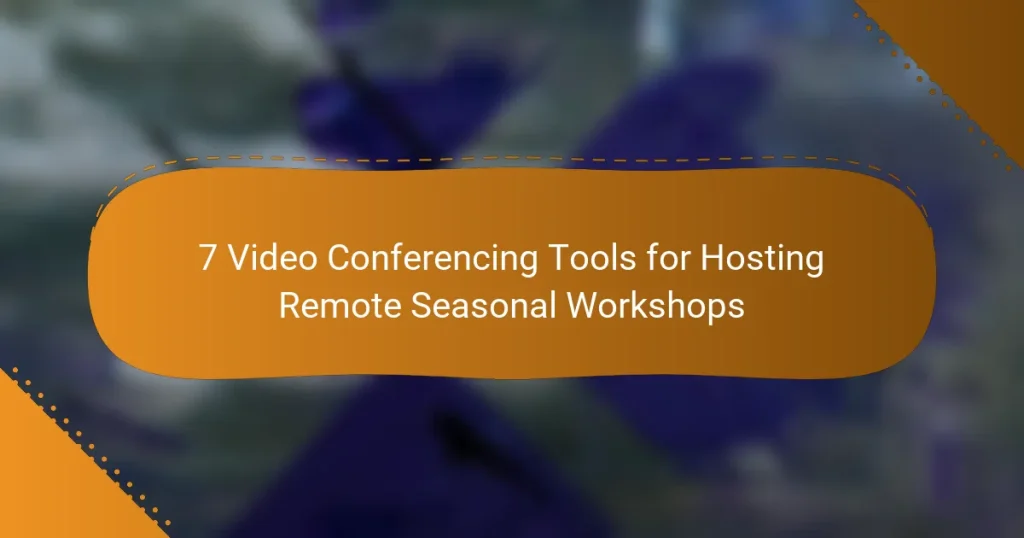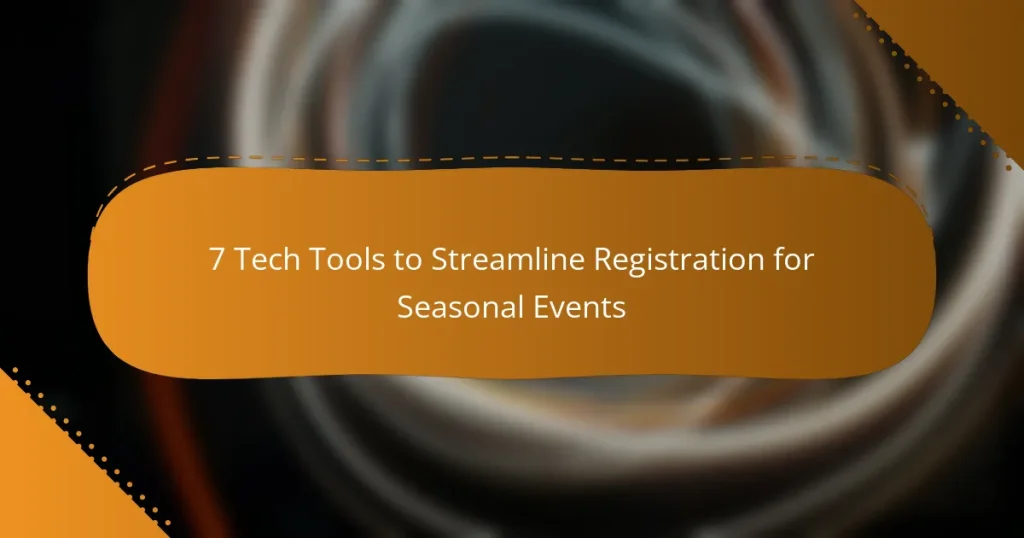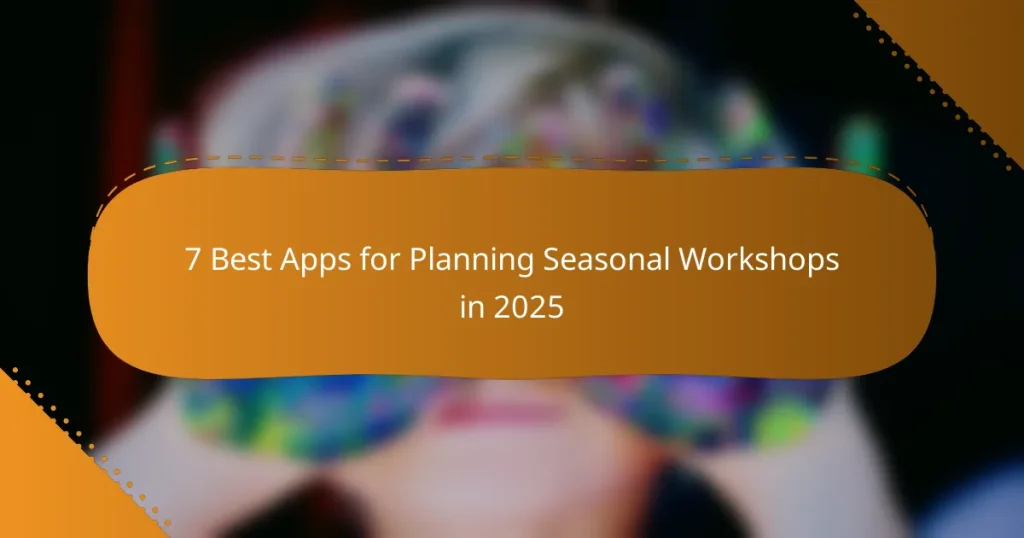Seasonal creative workshops that incorporate tech tools offer a unique opportunity to blend art and technology, fostering innovation and collaboration among participants. By utilizing digital platforms, these workshops enhance communication and streamline project management, making the creative process more engaging and efficient. The right tech tools can significantly elevate the workshop experience, catering to diverse creative needs and encouraging skill development.
7 Budget-Friendly Tech Gadgets for Interactive Workshops
7 Creative Uses of Social Media for Promoting Seasonal Workshops
7 Digital Resources for Seasonal Workshop Ideas and Inspiration
7 Video Conferencing Tools for Hosting Remote Seasonal Workshops
7 Tech Tools to Streamline Registration for Seasonal Events
7 Best Apps for Planning Seasonal Workshops in 2025
What are the best seasonal creative workshop ideas using tech tools?
Seasonal creative workshops using tech tools can engage participants in innovative ways, blending art and technology. These workshops often leverage digital platforms and tools to enhance creativity, collaboration, and skill development.
Virtual Reality Art Sessions
Virtual reality (VR) art sessions allow participants to create immersive 3D artworks in a virtual environment. Using VR headsets and software like Tilt Brush, artists can paint and sculpt in a space that feels limitless. These sessions can be tailored for different skill levels, making them accessible to beginners and experienced artists alike.
Consider organizing a themed VR art session, such as seasonal landscapes or abstract concepts, to inspire creativity. Ensure participants have access to the necessary VR equipment and provide a brief tutorial on how to navigate the software before starting the session.
Digital Photography Challenges
Digital photography challenges encourage participants to explore their surroundings while honing their photography skills. Set specific themes or prompts, such as capturing seasonal colors or textures, to guide participants in their photography journey. This can be done individually or in teams, fostering collaboration and friendly competition.
To make the challenge more engaging, consider incorporating social media elements where participants can share their best shots using a dedicated hashtag. Offering small prizes for categories like “Best Composition” or “Most Creative Use of Light” can motivate participants to push their creative boundaries.
Online Graphic Design Competitions
Online graphic design competitions invite participants to showcase their design skills using tools like Adobe Illustrator or Canva. Set a theme relevant to the season, such as holiday marketing materials or event posters, to provide a focused challenge. Participants can submit their designs for judging based on creativity, originality, and adherence to the theme.
Establish clear guidelines and deadlines for submissions, and consider having a panel of judges or a public voting system to determine the winners. This format not only encourages creativity but also helps participants build their portfolios.
Interactive Storytelling Workshops
Interactive storytelling workshops utilize digital platforms to create engaging narratives that participants can contribute to collaboratively. Tools like Twine or StoryMapJS allow users to craft stories that can include multimedia elements such as images, audio, and video. This format encourages creativity and teamwork as participants build upon each other’s ideas.
To enhance the experience, consider incorporating prompts or themes that resonate with the season, such as winter tales or spring adventures. Providing a framework for the story can help guide participants while still allowing for individual expression.
Augmented Reality Crafting
Augmented reality (AR) crafting workshops combine traditional crafting with digital enhancements. Participants can use AR apps to visualize their creations in real-time, adding layers of interactivity to their projects. This could involve creating physical crafts that are then enhanced with digital elements, such as animations or information overlays.
Choose simple crafting projects that can be easily integrated with AR, like greeting cards or decorations. Ensure participants have access to AR tools and provide clear instructions on how to use the technology effectively to enhance their crafting experience.
How can tech tools enhance seasonal workshops?
Tech tools can significantly enhance seasonal workshops by facilitating communication, organization, and creativity among participants. These tools streamline collaboration, making it easier to share ideas and manage projects effectively.
Real-time Collaboration Software
Real-time collaboration software allows participants to work together seamlessly, regardless of their physical location. Tools like Google Workspace or Microsoft Teams enable instant messaging, document sharing, and video conferencing, fostering a dynamic environment for brainstorming and feedback.
When selecting collaboration software, consider user-friendliness and integration with other tools. Look for features such as screen sharing and file versioning to ensure everyone stays on the same page. Avoid platforms that require extensive training, as they can hinder productivity during workshops.
Creative Project Management Tools
Creative project management tools help organize tasks, timelines, and resources for seasonal workshops. Platforms like Trello or Asana allow teams to visualize their workflow, assign responsibilities, and track progress, ensuring that all aspects of the workshop are covered.
Choose project management tools that offer templates tailored for creative projects to save time on setup. Regularly update task statuses and hold brief check-ins to keep the team aligned. Be cautious of overcomplicating the tool with unnecessary features that may confuse participants.
What are the top tech tools for creative workshops?
The top tech tools for creative workshops enhance collaboration, streamline processes, and foster innovation. These tools cater to various aspects of creativity, from design to brainstorming and virtual meetings, making them essential for effective workshops.
Adobe Creative Cloud
Adobe Creative Cloud is a comprehensive suite of applications designed for creative professionals. It includes popular tools like Photoshop, Illustrator, and InDesign, which allow users to create stunning visuals and graphics.
When using Adobe Creative Cloud in workshops, consider the skill levels of participants. While powerful, these tools may require a learning curve. Offering tutorials or pre-workshop training can help participants maximize their use of the software.
Canva for Teams
Canva for Teams simplifies graphic design with its user-friendly interface and extensive template library. This tool is ideal for collaborative projects, allowing team members to work together in real-time on presentations, social media graphics, and more.
Utilizing Canva in workshops can enhance creativity while keeping design accessible. Encourage participants to explore different templates and styles, and consider setting specific design challenges to inspire innovative outcomes.
Miro for Brainstorming
Miro is an online collaborative whiteboard platform that facilitates brainstorming and idea generation. It provides various templates and tools for mapping out concepts, making it a great choice for creative workshops.
To get the most out of Miro, establish clear objectives for brainstorming sessions. Use sticky notes, diagrams, and voting features to organize ideas effectively. This approach can help keep discussions focused and productive.
Zoom for Virtual Meetings
Zoom is a widely-used platform for virtual meetings, offering features like screen sharing, breakout rooms, and recording capabilities. It is particularly useful for remote workshops, enabling participants to connect from anywhere.
To ensure successful virtual workshops on Zoom, familiarize participants with the platform’s features beforehand. Encourage engagement by using breakout rooms for smaller group discussions and incorporating interactive elements like polls or Q&A sessions.
What are the criteria for selecting tech tools?
When selecting tech tools for seasonal creative workshops, consider user-friendliness, integration capabilities, and cost-effectiveness. These criteria ensure that the tools enhance creativity without causing frustration or overspending.
User-friendliness
User-friendliness is crucial for ensuring that all participants can easily navigate the tech tools. Look for intuitive interfaces and clear instructions that minimize the learning curve. Tools with drag-and-drop features or simple navigation menus tend to be more accessible.
Consider providing a brief training session or tutorial for participants to familiarize themselves with the tools before the workshop. This proactive approach can enhance engagement and productivity during the creative process.
Integration capabilities
Integration capabilities refer to how well a tech tool can connect with other applications and platforms. Tools that seamlessly integrate with popular software like Google Workspace or Microsoft Office can streamline workflows and improve collaboration. Check if the tool offers APIs or plugins for easier connectivity.
Evaluate the compatibility of the tech tools with existing systems used in your workshop. Ensuring that tools can share data and resources can save time and reduce frustration during the creative sessions.
Cost-effectiveness
Cost-effectiveness is about finding tools that provide good value for their price. Assess whether the features offered justify the cost and consider free or low-cost alternatives that meet your needs. Many tools offer tiered pricing models, so explore options that fit your budget.
Keep an eye out for discounts or special offers, especially for educational or non-profit organizations. This can significantly reduce expenses while still providing high-quality tech tools for your workshop.
How to plan a seasonal workshop with tech tools?
Planning a seasonal workshop using tech tools involves setting clear objectives, choosing the right tools, scheduling sessions effectively, and promoting the event to reach your target audience. Each step is crucial for ensuring the workshop runs smoothly and meets participants’ expectations.
Define objectives
Start by identifying the main goals of your workshop. Are you aiming to educate participants, foster creativity, or build community connections? Clear objectives will guide your planning and help measure success.
Consider using the SMART criteria—Specific, Measurable, Achievable, Relevant, Time-bound—to refine your objectives. For example, instead of a vague goal like “improve skills,” aim for “teach participants three new digital design techniques within two hours.”
Select appropriate tools
Choosing the right tech tools is essential for enhancing the workshop experience. Consider platforms for video conferencing, collaboration, and project management, such as Zoom, Miro, or Trello, depending on your workshop’s focus.
Evaluate tools based on user-friendliness, features, and cost. For instance, if your budget is tight, look for free or low-cost options that still offer essential functionalities. Test these tools beforehand to ensure they meet your needs.
Schedule sessions
Effective scheduling is key to maximizing participation. Consider your audience’s availability and preferences when selecting dates and times. Weekends or evenings might work better for working professionals, while weekdays could be ideal for students.
Use scheduling tools like Doodle or Google Calendar to find the best times for your participants. Aim for sessions that last between 1-3 hours to maintain engagement without overwhelming attendees.
Promote the workshop
Promotion is vital for attracting participants. Utilize social media platforms, email newsletters, and community boards to spread the word about your workshop. Create engaging content that highlights the benefits and unique aspects of your event.
Consider offering early-bird registration discounts or incentives for referrals to encourage sign-ups. A well-crafted promotional strategy can significantly increase attendance and create buzz around your workshop.
What are some advanced tech trends for workshops?
Advanced tech trends for workshops include the integration of virtual and augmented reality, artificial intelligence, and collaborative online tools. These technologies enhance engagement and facilitate interactive learning experiences.
Virtual and Augmented Reality
Virtual and augmented reality (VR and AR) create immersive environments that can transform traditional workshops. Participants can engage in simulations or view 3D models, making complex concepts easier to understand. For example, a design workshop might use AR to overlay digital designs onto physical objects.
When implementing VR or AR, consider the technical requirements, such as hardware availability and software compatibility. Ensure participants have access to devices, and provide clear instructions for setup to avoid disruptions.
Artificial Intelligence
Artificial intelligence (AI) can personalize learning experiences in workshops by analyzing participant data and adapting content accordingly. AI-driven tools can suggest resources, provide feedback, and even facilitate discussions through chatbots.
To effectively use AI, select platforms that offer user-friendly interfaces and robust analytics. Be mindful of privacy concerns and ensure compliance with data protection regulations, especially when handling personal information.
Collaborative Online Tools
Collaborative online tools enhance communication and teamwork in workshops, especially in hybrid or remote settings. Platforms like Miro or Google Workspace allow participants to brainstorm, share documents, and manage projects in real time.
Choose tools that suit your workshop’s goals and ensure all participants are familiar with their functionalities. Provide a brief tutorial at the start to maximize engagement and minimize technical difficulties during the session.
